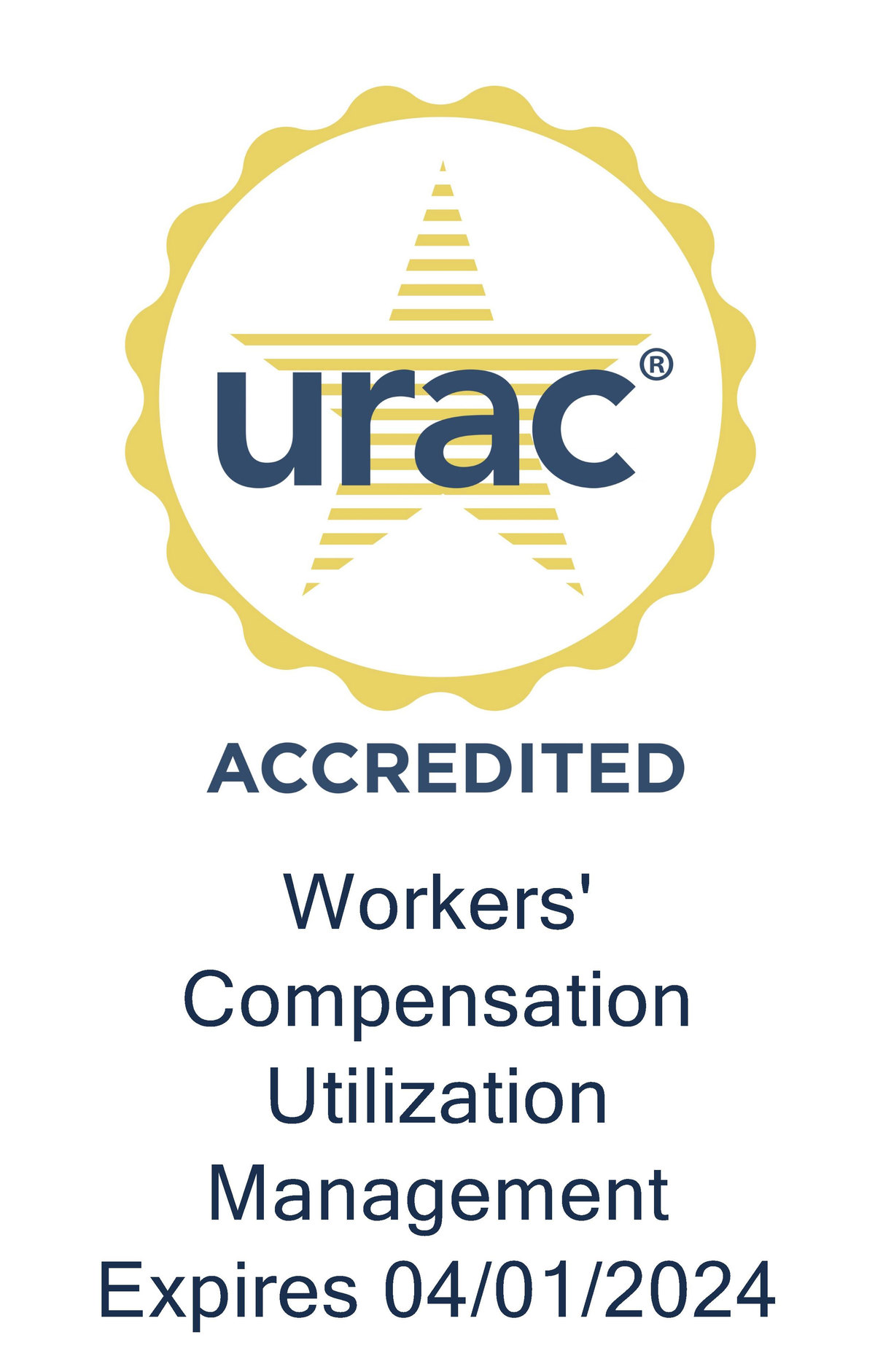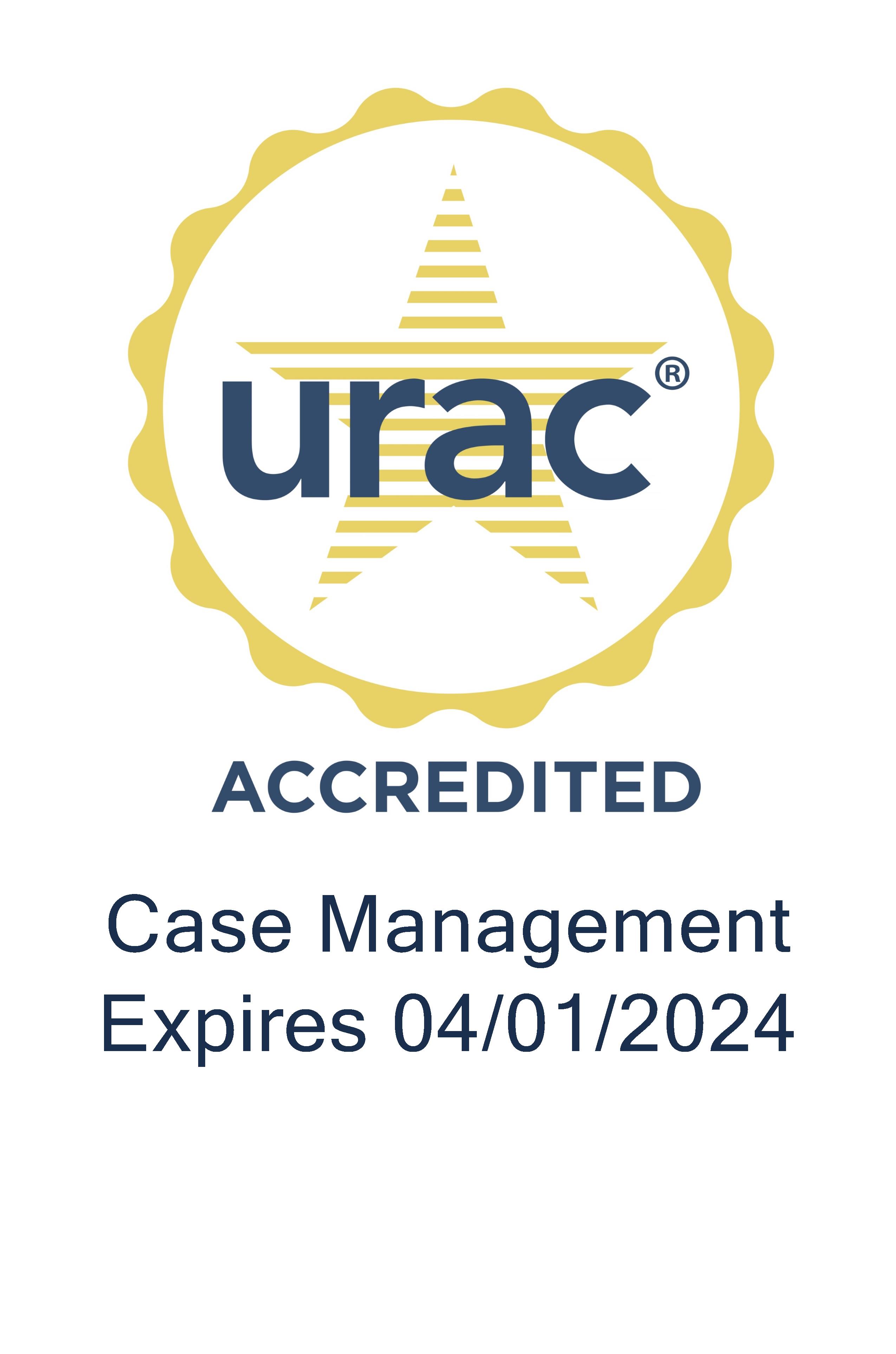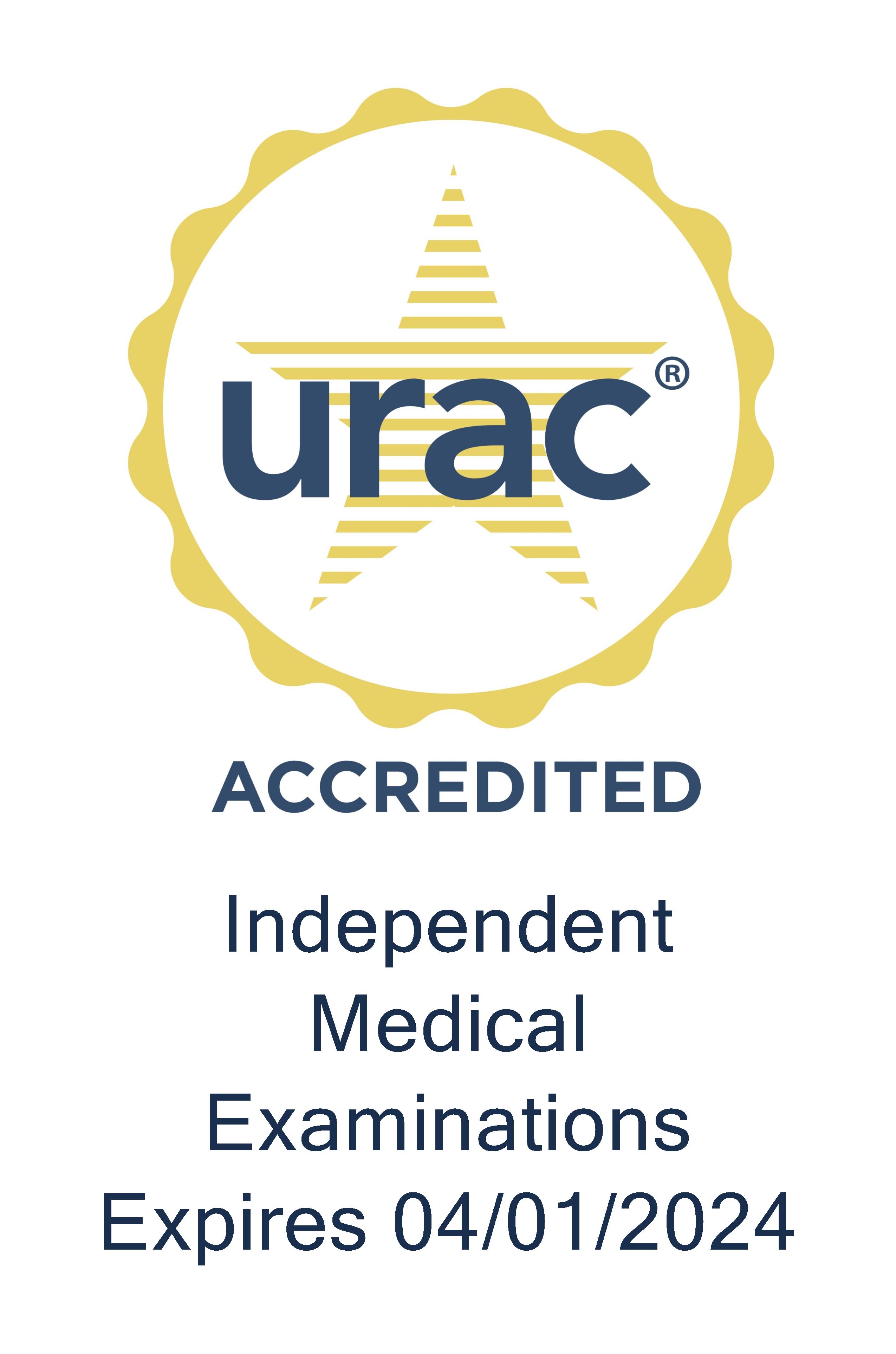As coronavirus fears continue to grip our world, we think about the nurse case managers on the front lines, helping injured employees recover. Their determination to meet this goal often goes beyond the physical injury and extends to improving the whole person. And, in a time when all of us could use an extra dose of optimism, we bring you a truly inspirational case involving Genex field case manager Becky Almskog, RN, BSN, CCM, of Colorado, who not only helped an injured employee find hope, but also a home.
Tom Kerr (TK): Becky, thanks so much for joining us.
Becky Almskog (BA): Thanks for having me.
TK: Can you start by giving us some background on this particular case?
BA: Sure. So, she’s a 64‑year‑old lady who has several comorbidities. She is a security guard at one of the grocery store distribution centers here in Colorado. And her main job was checking all of the trucks going out. Her job was to get out of her little guard shack, walk around the truck, do the inspection, and send them on their way.
Well, at the end of January, there was some ice on the ground. She was checking out the last truck of the night, and she ended up falling. She was taken to the emergency room where she was diagnosed with a stable pelvic fracture, meaning she did not need surgery of any type.
And then I was assigned to her case, not right at the beginning. I got her about three weeks or so into the claim.
TK: What was your first interaction like?
BA: My first interaction with her was on the phone. And that’s typically what I do, introduce myself, explain how case management works, and that I would be meeting her at the work comp doctor’s office and I would try and help her navigate the work comp system — because we know how complicated it can be. And, she had agreed to that.
So, she came to that first appointment with her friend that she had been staying with the previous two weeks. But right after the fall, she had been living in her car. Now, the adjuster had given me a heads‑up when I got the file from her that this injured worker was homeless, and the adjuster had gleaned this from her friend who she was staying with.
So back to the first visit, I noticed she was wearing her work uniform. I didn’t think anything of it. She seemed showered and appropriately groomed. Doctor’s offices are very rarely on time so, as you can imagine, there’s quite a bit of conversation that goes on. And that’s how you learn about the injured worker — what their life is like, what their job is like, where they’re at in the whole process. So that’s how I got to know a little bit about her.
I did not really address the homeless part of it. Because, at that time, I thought, “she’s staying with her friend. Her friend’s going to allow her to stay there until she’s able to return back to work.”
"I did not really address the homeless part of it. Because, at that time, I thought, 'she’s staying with her friend. Her friend’s going to allow her to stay there until she’s able to return back to work.'"
I knew she had a stable place to be. I knew she wouldn’t be in her car. The adjuster had agreed to provide transportation for her to and from physical therapy, doctor’s appointments and such, so I didn’t really, at that time, have any reason to treat it outside of what I normally do for my injured workers.
TK: So, it seems she was reluctant about telling you of her homelessness. What did you do to help earn her trust?
BA: There is a level of developing trust with each and every injured worker. Some are very open and honest and will tell you what they had for lunch, others are a little guarded. It’ll be three, four, five doctor’s visits before they kind of open up. She was one of the latter.
I find that if I share some things about myself, my injured workers are more likely to open up and I get to know them better that way. But with her … I mean, nobody would be proud to be homeless. I think that was a big source of embarrassment, of inadequate feelings for her. So, she did not tell me about her homelessness, nor did she tell me about her home foreclosure until she was getting ready to be discharged from the skilled nursing facility and we were down to trying to figure out what was going to happen with her.
"Nobody would be proud to be homeless. I think that was a big source of embarrassment, of inadequate feelings for her. So, she did not tell me about her homelessness."
TK: OK, so she had been living with her friend, but then she went to a skilled nursing facility? Why and how did you manage to arrange that?
RA: Her friend lived in a very small, two‑bedroom apartment up on the second floor. There was no elevator in the apartment building, so the only way in and out of this apartment is up and down two flights of stairs.
And the injured worker could barely walk with a front‑wheeled walker. So, this friend who was elderly as well, was having to partially carry her up and down the stairs. Now like I said, the first visit, [the injured worker's] daily hygiene habits were taken care of. The second visit, and the physical therapy visit after that, that stuff started slipping a little bit. And I thought, well, something’s going on here.
So, my inkling was she was failing at home, meaning she wasn't able to shower herself. She wasn't able to do her hair. She wasn't able to get up and down the stairs to the physical therapy appointment.
"So, my inkling was she was failing at home ... She wasn’t able to shower herself. She wasn’t able to do her hair. She wasn’t able to get up and down the stairs to the physical therapy appointment."
She was supposed to do therapy three times a week, so that started me thinking, “well, maybe this friend’s house is not the best place for her.”
And so, I contacted the adjuster and we brainstormed. And the only thing I could think of was to put her in a skilled nursing facility. I did that for three reasons: No. 1, she wasn’t doing well in the apartment; No. 2, at the nursing facility, she would get therapy five days a week, both PT and OT; and the third, and maybe the most important thing, is she would get medication regulation. Her insulin and her blood sugar would be monitored three times a day like it was supposed to. And she would get a nutritious diet, which is super important with her comorbidities. Because each one of those things adds additional recovery time.
So that’s why I wanted her to get into a skilled nursing facility. The adjuster was amazing. The two of us, we got it done.
I went to visit the injured worker the next day, and she was sitting in her bed doing a crossword puzzle. I walked in, and she just started crying. And I said, “Are you OK? Is this not going to work for you?”
And she said, “No. This place is beautiful. This bed is comfortable. I'm warm. I have food in my belly. I can't thank you enough, and I can't thank the adjuster enough."
And that right there is why I do what I do.
"'This place is beautiful. This bed is comfortable. I’m warm. I have food in my belly. I can’t thank you enough, and I can’t thank the adjuster enough.'"
TK: So, how long was she able to stay in the skilled nursing facility?
BA: So, the adjuster was kind enough to authorize a three‑week stay. I was hoping in that time period that she would be independent. Even if it was in a light-duty capacity, if she could work her regular eight‑hour shift, sitting in the little guard shack, maybe she didn’t have to go out and inspect all the trucks. Maybe her partner that was working with her could go out and do the physical part, and she could just enter the stuff into the computer.
So, I was hoping that I could get her rehabbed well enough so she could have her paycheck, so she could stay in an extended-stay hotel.
Well, the skilled nursing facility tuned her up well enough and quick enough that they said, “Well, she’s independent with stairs. She’s using a cane. She’s not using a walker anymore. We really, really, really need beds for other folks that need rehab.”
And all this COVID‑19 stuff was going on, so it was just a shuffle. And it turns out she couldn’t go back to her friend’s apartment. Her and her friend had had a falling out. And the employer didn’t offer light-duty.
The adjuster and I were scrambling trying to figure out a place for her to go.
TK: Aside from rehabbing from the injury, what were the other major concerns you had with her going back to living on the streets?
BA: There were several. Everybody knows the symptoms and the risk factors and the people that are high‑risk for this COVID‑19. She is a prime example of somebody who is high‑risk, super high‑risk. Not only that, she would be out in the cold, she would be out in the elements. How would she adhere to the activity restrictions that the orthopedic and the work comp doctor set up? She was doing a very poor job of controlling her diabetes. She was not checking her blood sugar nor doing her insulin. Her diet was absolutely horrendous. And, not to mention, the work comp doctor — because the injured worker was not staying at a facility — would not prescribe her more than ibuprofen and Tylenol.
"Everybody knows the symptoms and the risk factors and the people that are high‑risk for this COVID‑19. She is a prime example of somebody who is high‑risk, super high‑risk."
So, her pain control would have suffered, and pelvic fractures are notoriously painful. You can’t get comfortable sitting. You can’t get comfortable laying down. Walking hurts. Everything hurts. So, imagine sitting or sleeping in your car.
And, most importantly, safety. If any other people on the street had found out she’d had narcotics or any kind of pain medicine, her safety would have been in jeopardy, more than I was willing to take a risk.
TK: OK, so what was her next option? Did she have one?
BA: I knew she didn’t have any friends here in Colorado other than the one that she couldn’t come back to her. So, I was thinking, “OK, well, let’s get her out into one of the extended-stay motels, and maybe the adjuster would be willing to help her pay for that for a couple of weeks.”
So, I contacted the adjuster, and she said, “Well, typically we don’t do this, but in her case, we need to get her moving.” So, she had agreed to help her pay for some of the cost of the extended-stay hotel.
So, I called some of the places around her. I wanted to keep her close to her work, in the event that the employer changed their mind and might offer light duty for her. I wanted her to be close enough to be able to get there.
So, I contacted the extended-stay hotel and they said, “Well, we aren’t renting rooms for more than two or three nights at a time. The governor’s getting ready to put the city on lockdown, and if that happens, then all of the hotels in the Denver metro area close up and everybody moves out.”
So, then we had to go back to the drawing board. I tried to contact a homeless shelter and I had no luck with that. They were full. They weren’t taking any new people because of the virus.
So, I went to my pastor at my church and I said, “OK, is there anything that we can offer?” And he gave me a resource. I called them. And again, they were full as well.
So, I went back to the injured worker and said, “I’m at a loss. I’ve searched for every place under the sun I can think of, and I’m not finding anything.”
"I tried to contact a homeless shelter and I had no luck with that. They were full. They weren’t taking any new people because of the virus."
And she said, ‘It’s funny, but I haven’t talked to my brother in the longest time. We’ve been estranged for a number of years. And I talked to him the other night. He lives in Texas with his wife and he said I could stay with them if I could get there.’ And I was like, “Wow. Thank you, God [laughs]!” How does that happen and why did that happen? Who knows? But I grabbed onto it. So again, I contacted the adjuster. I contacted the discharge planner at the nursing facility. I contacted the work comp doctor. I even had several conversations, with the injured worker’s approval, with the brother and sister‑in‑law down in Texas. They wanted to know how well does she move around? How does she get her medical care? Does she need physical therapy?
I honestly answered all of those. And, they said, “OK, we’ll call you back tomorrow. And we’ll let you know if we’re willing to take her.” And sure enough, the next morning, my phone rings, and it was them. They said, “if you can get her down here, we’ll take care of her. And we’ll take it from there.”
So, I called the adjuster and she came to the decision to settle the claim. I’m just grateful that she did, because that allowed her to be discharged from the skilled nursing facility and go down and be in a safe environment while this whole COVID‑19 thing is going on and she’s not on the streets.
So, we picked the injured worker up from the skilled nursing facility. She had one pair of pajamas and she had her uniform that she fell in at work. That was all she had. We went and got her some clothes. We got her a warm coat. We took her to get one of her checks cashed so she would have a little bit of money. And we got her to the airport. She flew down to Texas, she arrived, she went to her brother’s house. And she seems to be doing fantastic. I talked with her and the sister‑in‑law yesterday, and she said, “It’s so warm down here.” She’s like, “My pain is so much less.”
The skilled nursing facility gave her some home exercises to do. So, she’s doing those on a daily basis. The brother and sister‑in‑law are helping her keep track of her blood sugar. And she said, “You know, my brother’s helped me, and I looked at my finances, and I think I can actually retire and not go back to work if I stay in Texas.”
TK: You really went the extra mile with this injured employee and you changed her life dramatically. But what did you learn from this experience?
BA: Where there’s a will, there’s a way [laughs]. I was not going to send her out into the street. Tom, it would have been a death sentence for her. She would have gotten ill, her safety would have been compromised. No, I just wasn’t willing to do that. So, I was going to beat down every door until I found someplace for her to go. So, where there’s a will, there’s a way. That’s what I learned.
"I was not going to send her out into the street. It would have been a death sentence for her."
Also, I want to add that I love having the support from an employer who said, “We’re going to back you, and we’re going to do what’s right, and take care of the injured worker, and get things done.” And that came from both Genex, from my supervisors, on up to the adjuster. The adjuster was key to getting this taken care of. And so, I’m just grateful for the whole team.
TK: Thank you, Becky, for sharing your incredible story and for everything you do to help injured employees return to health. We’re truly proud of you and all of our case managers at Genex. We’ll be back with another Inside Workers’ Comp soon, but until then, stay safe and thanks for listening.






